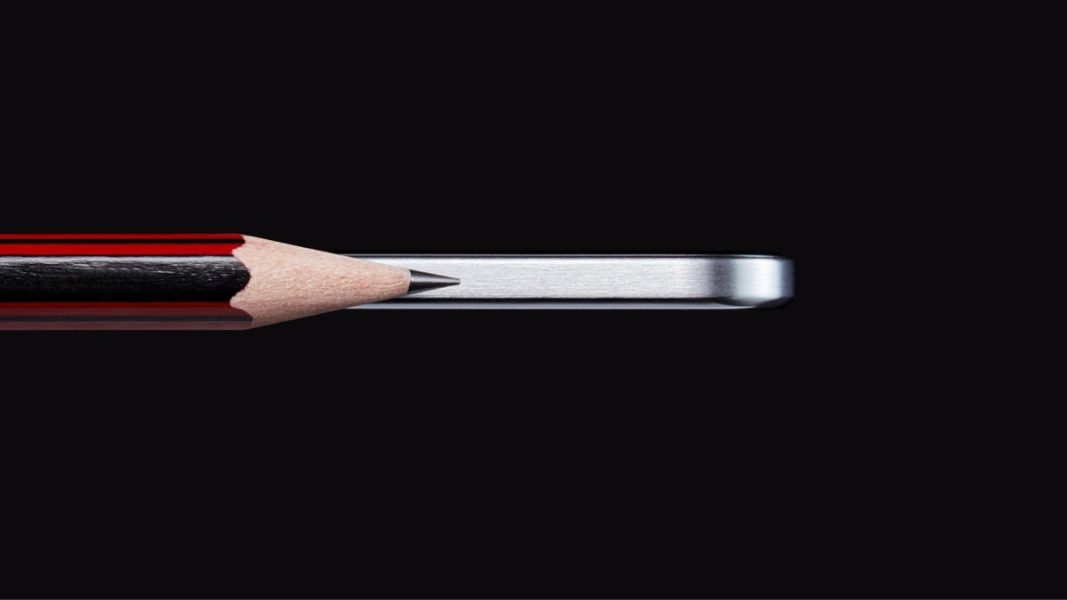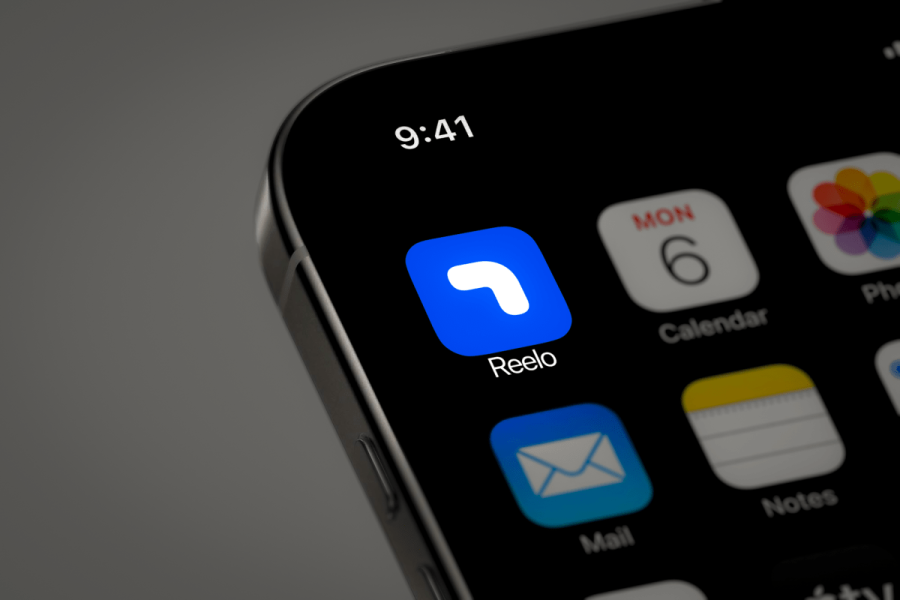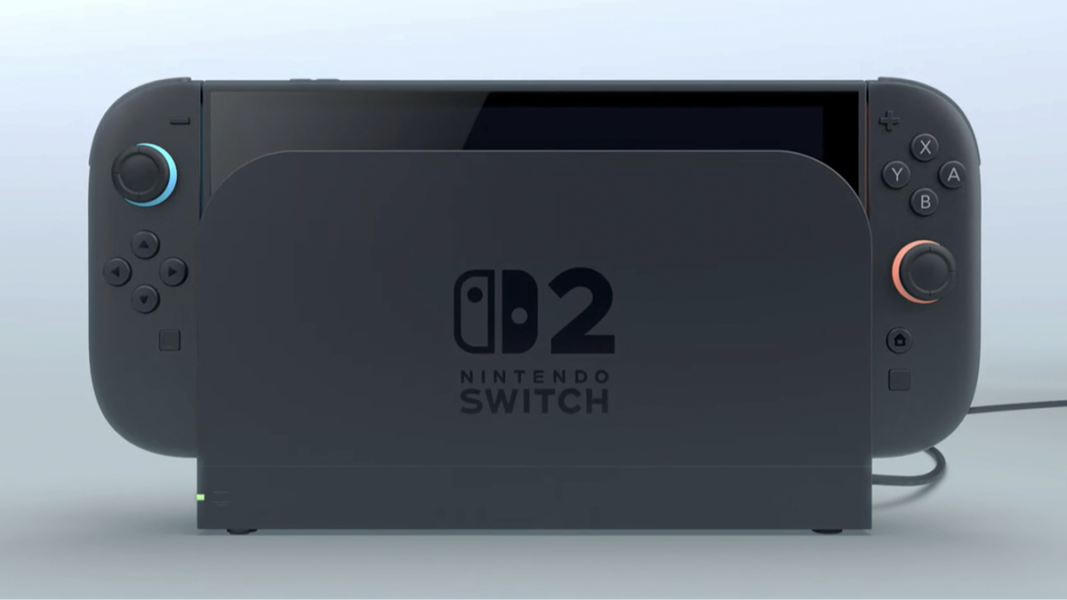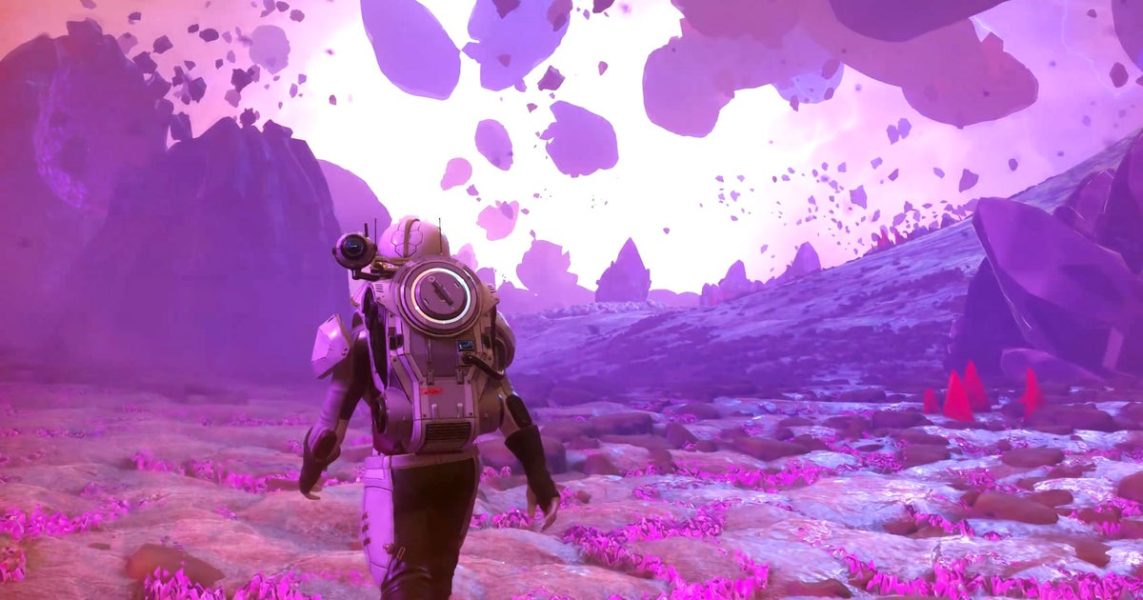Android 16 and 17 will bring better apps on foldable phones, tablets – SamMobile – Samsung news
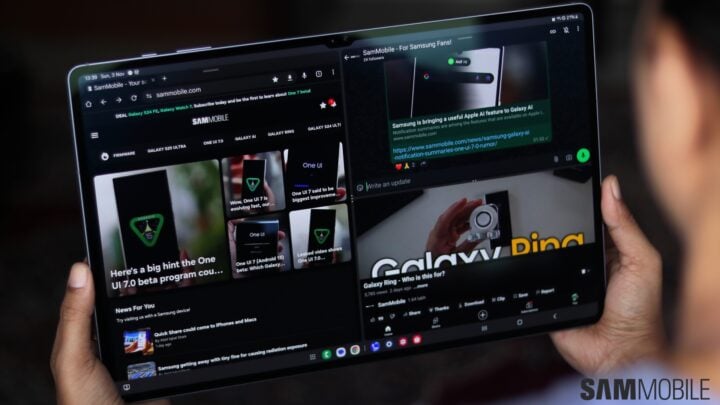
© 2025 SamMobile
SamMobile has affiliate and sponsored partnerships. If you buy something through one of these links, we may earn a commission.
Last updated: January 27th, 2025 at 09:30 UTC+01:00 Even though Google aimed to bring multi-column apps for tablets with Android 3.0 (Honeycomb), those plans never materialized. Even now, many apps are still not optimized for big-screen devices like foldable phones and tablets.
With Android 12L (One UI 4.1.1), Google restarted its efforts to make Android better for big-screen devices. Since then, it has been improving its own apps to scale better on foldable phones and tablets. It has also been advising app developers to make similar changes to their apps and games so that it improves the overall experience for all big-screen device users.
Android 17 could force app developers to optimize apps for foldable phones and tablets
Now, the company has revealed the steps it has started taking to make apps scale better on big-screen Android devices. Our Android 16 Beta 1 article explained how Android 16 removes restrictions that app developers can take to lock their app to a specific orientation or aspect ratio. Google plans to go one step further with Android 17 and completely remove such opt-in restrictions that app developers can implement.
Google has clearly explained in its new blog post that with Android 17, developers can’t opt into the ability to restrict their apps to a specific orientation (landscape or portrait) or aspect ratio. So, they need to scale their apps better using Google’s UI design guidelines.
As Android 17 will stretch unoptimized apps to fit the complete screen area on foldable phones and tablets, they will look unaesthetic, and app developers will likely be forced to optimize their apps to look better and take better advantage of the big screen. Google already has an article explaining how to design apps that scale well for big-screen devices.
The story continues after our video below.
Google plans to release Android 16 in Q2 2025 and Android 17 in 2026. So, next year, apps targeted at Android 17 can’t be restricted to run in a portrait orientation or have black bars around. The company also gave an example of FlipaClip, an animation app, which saw 54% growth from tablet users after the developer optimized their app for large-screen devices.
Google also explained how developers can test their apps for various screen sizes and form factors using the Espresso testing framework and Jetpack Compose testing APIs.
Apps could look better in DeX mode with Android 17
With all these changes coming to Android 16 and Android 17, you can expect smartphone brands and third-party app developers to create better-looking and behaving apps on foldable phones and tablets. Optimized apps will look good in both landscape and portrait orientations and whether they are used in split-screen multitasking, full-screen, or windowed modes.
Since Samsung DeX forces apps to start in a window mode, apps optimized for big-screen devices are bound to look and behave much better in DeX mode on Galaxy smartphones and tablets.
With Android 12L (One UI 4.1.1), Google restarted its efforts to make Android better for big-screen devices. Since then, it has been improving its own apps to scale better on foldable phones and tablets. It has also been advising app developers to make similar changes to their apps and games so that it improves the overall experience for all big-screen device users.
Android 17 could force app developers to optimize apps for foldable phones and tablets
Now, the company has revealed the steps it has started taking to make apps scale better on big-screen Android devices. Our Android 16 Beta 1 article explained how Android 16 removes restrictions that app developers can take to lock their app to a specific orientation or aspect ratio. Google plans to go one step further with Android 17 and completely remove such opt-in restrictions that app developers can implement.
Google has clearly explained in its new blog post that with Android 17, developers can’t opt into the ability to restrict their apps to a specific orientation (landscape or portrait) or aspect ratio. So, they need to scale their apps better using Google’s UI design guidelines.
As Android 17 will stretch unoptimized apps to fit the complete screen area on foldable phones and tablets, they will look unaesthetic, and app developers will likely be forced to optimize their apps to look better and take better advantage of the big screen. Google already has an article explaining how to design apps that scale well for big-screen devices.
The story continues after our video below.
Google plans to release Android 16 in Q2 2025 and Android 17 in 2026. So, next year, apps targeted at Android 17 can’t be restricted to run in a portrait orientation or have black bars around. The company also gave an example of FlipaClip, an animation app, which saw 54% growth from tablet users after the developer optimized their app for large-screen devices.
Google also explained how developers can test their apps for various screen sizes and form factors using the Espresso testing framework and Jetpack Compose testing APIs.
Apps could look better in DeX mode with Android 17
With all these changes coming to Android 16 and Android 17, you can expect smartphone brands and third-party app developers to create better-looking and behaving apps on foldable phones and tablets. Optimized apps will look good in both landscape and portrait orientations and whether they are used in split-screen multitasking, full-screen, or windowed modes.
Since Samsung DeX forces apps to start in a window mode, apps optimized for big-screen devices are bound to look and behave much better in DeX mode on Galaxy smartphones and tablets.
Now, the company has revealed the steps it has started taking to make apps scale better on big-screen Android devices. Our Android 16 Beta 1 article explained how Android 16 removes restrictions that app developers can take to lock their app to a specific orientation or aspect ratio. Google plans to go one step further with Android 17 and completely remove such opt-in restrictions that app developers can implement.
Google has clearly explained in its new blog post that with Android 17, developers can’t opt into the ability to restrict their apps to a specific orientation (landscape or portrait) or aspect ratio. So, they need to scale their apps better using Google’s UI design guidelines.
As Android 17 will stretch unoptimized apps to fit the complete screen area on foldable phones and tablets, they will look unaesthetic, and app developers will likely be forced to optimize their apps to look better and take better advantage of the big screen. Google already has an article explaining how to design apps that scale well for big-screen devices.
The story continues after our video below.
Google plans to release Android 16 in Q2 2025 and Android 17 in 2026. So, next year, apps targeted at Android 17 can’t be restricted to run in a portrait orientation or have black bars around. The company also gave an example of FlipaClip, an animation app, which saw 54% growth from tablet users after the developer optimized their app for large-screen devices.
Google also explained how developers can test their apps for various screen sizes and form factors using the Espresso testing framework and Jetpack Compose testing APIs.
Apps could look better in DeX mode with Android 17
With all these changes coming to Android 16 and Android 17, you can expect smartphone brands and third-party app developers to create better-looking and behaving apps on foldable phones and tablets. Optimized apps will look good in both landscape and portrait orientations and whether they are used in split-screen multitasking, full-screen, or windowed modes.
Since Samsung DeX forces apps to start in a window mode, apps optimized for big-screen devices are bound to look and behave much better in DeX mode on Galaxy smartphones and tablets.
Now, the company has revealed the steps it has started taking to make apps scale better on big-screen Android devices. Our Android 16 Beta 1 article explained how Android 16 removes restrictions that app developers can take to lock their app to a specific orientation or aspect ratio. Google plans to go one step further with Android 17 and completely remove such opt-in restrictions that app developers can implement.
Google has clearly explained in its new blog post that with Android 17, developers can’t opt into the ability to restrict their apps to a specific orientation (landscape or portrait) or aspect ratio. So, they need to scale their apps better using Google’s UI design guidelines.
As Android 17 will stretch unoptimized apps to fit the complete screen area on foldable phones and tablets, they will look unaesthetic, and app developers will likely be forced to optimize their apps to look better and take better advantage of the big screen. Google already has an article explaining how to design apps that scale well for big-screen devices.
The story continues after our video below.
Google plans to release Android 16 in Q2 2025 and Android 17 in 2026. So, next year, apps targeted at Android 17 can’t be restricted to run in a portrait orientation or have black bars around. The company also gave an example of FlipaClip, an animation app, which saw 54% growth from tablet users after the developer optimized their app for large-screen devices.
Google also explained how developers can test their apps for various screen sizes and form factors using the Espresso testing framework and Jetpack Compose testing APIs.
Apps could look better in DeX mode with Android 17
With all these changes coming to Android 16 and Android 17, you can expect smartphone brands and third-party app developers to create better-looking and behaving apps on foldable phones and tablets. Optimized apps will look good in both landscape and portrait orientations and whether they are used in split-screen multitasking, full-screen, or windowed modes.
Since Samsung DeX forces apps to start in a window mode, apps optimized for big-screen devices are bound to look and behave much better in DeX mode on Galaxy smartphones and tablets.
Google has clearly explained in its new blog post that with Android 17, developers can’t opt into the ability to restrict their apps to a specific orientation (landscape or portrait) or aspect ratio. So, they need to scale their apps better using Google’s UI design guidelines.
As Android 17 will stretch unoptimized apps to fit the complete screen area on foldable phones and tablets, they will look unaesthetic, and app developers will likely be forced to optimize their apps to look better and take better advantage of the big screen. Google already has an article explaining how to design apps that scale well for big-screen devices.
The story continues after our video below.
Google plans to release Android 16 in Q2 2025 and Android 17 in 2026. So, next year, apps targeted at Android 17 can’t be restricted to run in a portrait orientation or have black bars around. The company also gave an example of FlipaClip, an animation app, which saw 54% growth from tablet users after the developer optimized their app for large-screen devices.
Google also explained how developers can test their apps for various screen sizes and form factors using the Espresso testing framework and Jetpack Compose testing APIs.
Apps could look better in DeX mode with Android 17
With all these changes coming to Android 16 and Android 17, you can expect smartphone brands and third-party app developers to create better-looking and behaving apps on foldable phones and tablets. Optimized apps will look good in both landscape and portrait orientations and whether they are used in split-screen multitasking, full-screen, or windowed modes.
Since Samsung DeX forces apps to start in a window mode, apps optimized for big-screen devices are bound to look and behave much better in DeX mode on Galaxy smartphones and tablets.
As Android 17 will stretch unoptimized apps to fit the complete screen area on foldable phones and tablets, they will look unaesthetic, and app developers will likely be forced to optimize their apps to look better and take better advantage of the big screen. Google already has an article explaining how to design apps that scale well for big-screen devices.
The story continues after our video below.
Google plans to release Android 16 in Q2 2025 and Android 17 in 2026. So, next year, apps targeted at Android 17 can’t be restricted to run in a portrait orientation or have black bars around. The company also gave an example of FlipaClip, an animation app, which saw 54% growth from tablet users after the developer optimized their app for large-screen devices.
Google also explained how developers can test their apps for various screen sizes and form factors using the Espresso testing framework and Jetpack Compose testing APIs.
Apps could look better in DeX mode with Android 17
With all these changes coming to Android 16 and Android 17, you can expect smartphone brands and third-party app developers to create better-looking and behaving apps on foldable phones and tablets. Optimized apps will look good in both landscape and portrait orientations and whether they are used in split-screen multitasking, full-screen, or windowed modes.
Since Samsung DeX forces apps to start in a window mode, apps optimized for big-screen devices are bound to look and behave much better in DeX mode on Galaxy smartphones and tablets.
The story continues after our video below.
Google plans to release Android 16 in Q2 2025 and Android 17 in 2026. So, next year, apps targeted at Android 17 can’t be restricted to run in a portrait orientation or have black bars around. The company also gave an example of FlipaClip, an animation app, which saw 54% growth from tablet users after the developer optimized their app for large-screen devices.
Google also explained how developers can test their apps for various screen sizes and form factors using the Espresso testing framework and Jetpack Compose testing APIs.
Apps could look better in DeX mode with Android 17
With all these changes coming to Android 16 and Android 17, you can expect smartphone brands and third-party app developers to create better-looking and behaving apps on foldable phones and tablets. Optimized apps will look good in both landscape and portrait orientations and whether they are used in split-screen multitasking, full-screen, or windowed modes.
Since Samsung DeX forces apps to start in a window mode, apps optimized for big-screen devices are bound to look and behave much better in DeX mode on Galaxy smartphones and tablets.
Google plans to release Android 16 in Q2 2025 and Android 17 in 2026. So, next year, apps targeted at Android 17 can’t be restricted to run in a portrait orientation or have black bars around. The company also gave an example of FlipaClip, an animation app, which saw 54% growth from tablet users after the developer optimized their app for large-screen devices.
Google also explained how developers can test their apps for various screen sizes and form factors using the Espresso testing framework and Jetpack Compose testing APIs.
Apps could look better in DeX mode with Android 17
With all these changes coming to Android 16 and Android 17, you can expect smartphone brands and third-party app developers to create better-looking and behaving apps on foldable phones and tablets. Optimized apps will look good in both landscape and portrait orientations and whether they are used in split-screen multitasking, full-screen, or windowed modes.
Since Samsung DeX forces apps to start in a window mode, apps optimized for big-screen devices are bound to look and behave much better in DeX mode on Galaxy smartphones and tablets.
Google plans to release Android 16 in Q2 2025 and Android 17 in 2026. So, next year, apps targeted at Android 17 can’t be restricted to run in a portrait orientation or have black bars around. The company also gave an example of FlipaClip, an animation app, which saw 54% growth from tablet users after the developer optimized their app for large-screen devices.
Google also explained how developers can test their apps for various screen sizes and form factors using the Espresso testing framework and Jetpack Compose testing APIs.
Apps could look better in DeX mode with Android 17
With all these changes coming to Android 16 and Android 17, you can expect smartphone brands and third-party app developers to create better-looking and behaving apps on foldable phones and tablets. Optimized apps will look good in both landscape and portrait orientations and whether they are used in split-screen multitasking, full-screen, or windowed modes.
Since Samsung DeX forces apps to start in a window mode, apps optimized for big-screen devices are bound to look and behave much better in DeX mode on Galaxy smartphones and tablets.
Google also explained how developers can test their apps for various screen sizes and form factors using the Espresso testing framework and Jetpack Compose testing APIs.
Apps could look better in DeX mode with Android 17
With all these changes coming to Android 16 and Android 17, you can expect smartphone brands and third-party app developers to create better-looking and behaving apps on foldable phones and tablets. Optimized apps will look good in both landscape and portrait orientations and whether they are used in split-screen multitasking, full-screen, or windowed modes.
Since Samsung DeX forces apps to start in a window mode, apps optimized for big-screen devices are bound to look and behave much better in DeX mode on Galaxy smartphones and tablets.
With all these changes coming to Android 16 and Android 17, you can expect smartphone brands and third-party app developers to create better-looking and behaving apps on foldable phones and tablets. Optimized apps will look good in both landscape and portrait orientations and whether they are used in split-screen multitasking, full-screen, or windowed modes.
Since Samsung DeX forces apps to start in a window mode, apps optimized for big-screen devices are bound to look and behave much better in DeX mode on Galaxy smartphones and tablets.
With all these changes coming to Android 16 and Android 17, you can expect smartphone brands and third-party app developers to create better-looking and behaving apps on foldable phones and tablets. Optimized apps will look good in both landscape and portrait orientations and whether they are used in split-screen multitasking, full-screen, or windowed modes.
Since Samsung DeX forces apps to start in a window mode, apps optimized for big-screen devices are bound to look and behave much better in DeX mode on Galaxy smartphones and tablets.
Since Samsung DeX forces apps to start in a window mode, apps optimized for big-screen devices are bound to look and behave much better in DeX mode on Galaxy smartphones and tablets.
You might also likeWhile Samsung hasn’t released the stable Android 15 (One UI 7.0) update, Google is swiftly advancing with the release of the first public beta version of Android 16. It brings some new features, but the most interesting of them all are Live Updates and Samsung’s AVP codec. Let us have a look at all the […]Android has always been ahead of iOS and iPadOS when it comes to notification management and multitasking. While iPhones still lack true side-by-side multitasking, Google is already working on offering three side-by-side apps for multitasking on tablets running Android 16. The feature could come to Galaxy phones and tablets with the One UI 8.0 update. […]While Samsung still hasn’t released the stable version of Android 15 (One UI 7.0) to its phones, Google has already released the second Developer Preview of Android 16. The first Developer Preview version was released a few weeks ago, and the stable version is expected to be released in mid-2025. Android 16 Developer Preview 2 […]Samsung has yet to release the beta version of Android 15 (One UI 7.0), while Google has already released the first beta version of Android 16. Usually, Google releases a developer beta version of Android in the first quarter of each year. However, with Android 16, it is three months earlier with the release of […]Last week, Google revealed that it plans to release the next major Android update earlier than usual. According to the company’s release timeline, the Android 16 update will be released sometime in the second quarter of next year (2025). Now, the exact Android 16 release date has potentially leaked. Android 16 could be released in […]Usually, Google releases a stable version of a new version of Android in the third or fourth quarter of a year. Take the last three versions of Android for example. The company released Android 13 in August 2022, Android 14 in October 2023, and Android 15 in October 2024. Well, Google will release the next […]ReviewsBest picksDevicesSamsung Galaxy Z Fold 6SM-F956BSamsung Galaxy Z Flip 6SM-F741BSamsung Galaxy Buds 3 ProSM-R630Samsung Galaxy F55SM-E556BSamsung Galaxy M55SM-M556BSamsung Galaxy M15SM-M156BSamsung Galaxy C55SM-C5560Samsung Galaxy A55SM-A556EOpinionsNotebookTVSocial media© 2025 SamMobileWe’d like to show you notifications for the latest important news and updates
Source: https://www.sammobile.com/news/android-16-17-better-apps-foldable-phones-tablets/
